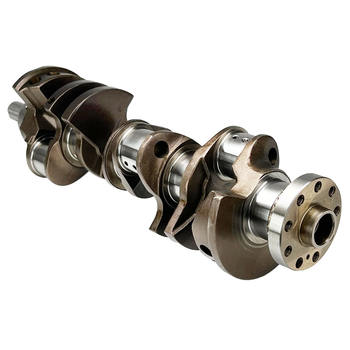The Remarkable Role of Crankshaft Design
When it comes to engine performance, crankshaft design plays a crucial role in determining piston motion and combustion efficiency. To be honest, the crankshaft might not be the flashiest component, but it's essential for transforming linear piston motion into rotary motion that drives your vehicle.
Understanding Piston Motion
The crankshaft's design determines the piston's motion, which significantly impacts engine performance. The connecting rod connects the piston to the crankshaft, and the crankpin's offset creates the reciprocating motion of the piston. As a result, the crankshaft's design influences the engine's power output, torque, and fuel efficiency.
Exploring Combustion Efficiency
Combustion efficiency refers to how effectively an engine converts fuel into mechanical energy. Crankshaft design impacts combustion efficiency by influencing the compression ratio, the amount of air and fuel in the cylinder, and the timing of the combustion process.
Optimizing Compression Ratio
A higher compression ratio typically leads to better fuel efficiency and power output. Crankshaft design can be optimized to increase the compression ratio by altering the connecting rod length and crankshaft throw. This change in geometry increases the space available in the cylinder for air and fuel, leading to more efficient combustion.
Practical Tips for Optimizing Engine Performance
Now that we understand the connection between crankshaft design and engine performance let's explore some practical tips for optimization:
A Closer Look at Crankshaft Materials
Crankshaft materials significantly impact engine performance and durability. Common materials include cast iron, forged steel, and billet steel. Each material has its advantages and trade-offs in terms of cost, strength, and weight.
Choosing the Right Material
To choose the best material for your engine, consider factors such as:
- Engine size and power output
- Desired engine performance characteristics (e.g., high-RPM capability)
- Budget constraints
Conclusion and Next Steps
In conclusion, crankshaft design plays a critical role in determining piston motion and combustion efficiency. By understanding the principles behind crankshaft design and implementing practical optimization tips, you can significantly improve your engine's performance. So, what are you waiting for? It's time to roll up your sleeves and start optimizing!




